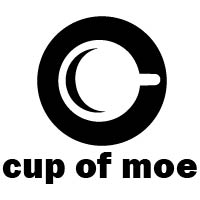We may earn money or products from the companies mentioned in this post.
1972 Alfred Hitchock-directed thriller “Frenzy” is filled with the typical Hitchock trappings. From a distinctly British setting to its groundbreaking cinematography and a suspenseful plot. While it’s one of the director’s best films, “Frenzy” also ranks among his most underappreciated. Shockingly macabre and clever, it’s a masterpiece bit of suspense cinema.
During the 1970s, a vicious serial killer frightens London with grisly murders. As the film opens, a deceased woman floats naked down the Thames, a tie around her neck. The veritable Jack the Ripper antagonist rapes his victims, then strangling them with a necktie thereby garnering the nickname the Necktie Murderer. Freshly fired from his gig as a barkeep at a pub, Richard Blaney (Jon Finch) visits old friend Bob Rusk (Barry Foster), a Covent Garden producer wholesaler and later his estranged ex-wife Brenda (Barbara Leigh-Hunt) at her matchmaking operation. Though Brenda and Richard have a brief row, Brenda buys him dinner before he spends the evening sleeping at a Salvation Army shelter.
The next day, Blaney rendezvous with girlfriend and former pub co-worker Barbara “Babs” Milligan (Anna Massey). Unfortunately, when Brenda turns up dead, Richard is implicated through a hefty bit of circumstantial evidence. This sets Chief Inspector Oxford (Alec McCowen) on the scent of Blaney while Richard scrambles to prove his innocence.
Based on the Arthur La Bern novel Goodbye Piccadilly, Farewell Leicester Square, “Frenzy” is one of Hitchock’s darkest movies. There’s a fair bit of nudity, and murders might be fairly bloodless but they’re no less grim. Still, “Frenzy” finds comic relief with a subplot regarding Inspector Oxford and his wife’s (Vivien Merchant) aspirations as a gourmet chef.
Cinematography is as inventive as ever. Opening with an ariel shot that pans over downtown London, camera angles remain lofty yet not a frame of celluloid is wasted. A novel scene finds the camera following the killer and an unsuspecting victim up a flight of stairs before reversing slowly, soundlessly, and seamlessly, leaving the audience sitting silently with a renewed sense of foreboding.
Despite a Hitchcockian vibe, “Frenzy” feels as fresh as ever. The intricate plot simmers as Blaney blunders his way through the movie, each attempt to prove his innocence instead lending credence to Richard’s guilt. Much of the narrative relies upon a string of juicy coincidences. And there’s a seemingly contrasting slapstick note apparent in the interactions between the Oxfords. At times, this humor comes across as incongruous. But that, presumably, was intentional on the part of ingenious director Alfred Hitchcock. Similarly, the intertwining storylines weave a twisted web of fantastical events that’s at once slightly unbelievable and delightfully witty.
Hitchcock is at his finest in “Frenzy,” with its gruesome content, comedic subplot, and meandering storyline. Aided by artful cinematography, this 1972 suspense thriller amazes with its twists and turns that continue until the final credits roll.
This post may contain affiliate links. We are a participant in affiliate programs such as the Amazon Services LLC Associates Program, an affiliate advertising program designed to provide a means for us to earn fees by linking to Amazon.com and affiliated sites. However, all products are thoroughly tested and reviews are honest and unbiased.

